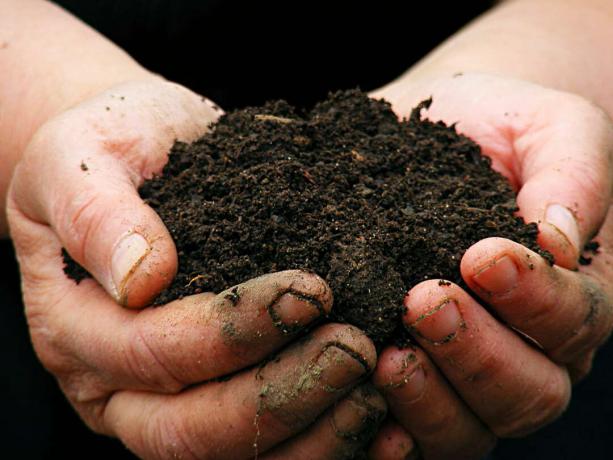The mini kiwi is all the rage. We show when and how you can best plant the kiwi berry in your own garden and what you need to consider.

Mini kiwi fruit (Actinidia arguta), also called kiwi berries, look like large kiwis inside (Actinidia deliciosa), but from a purely external point of view, the likelihood of confusion is low. As the name suggests, mini kiwis are very small and have smooth, edible skin. The kiwi berries are not damaged by frost down to -30 ° C. In addition, they are easy to care for and there is nothing wrong with growing them in our garden. However, in order to enable optimal growth and the best possible yield, you should know how the delicious fruit should be planted and cared for. Our article will tell you everything you need to know about the right location, timing and planting.
contents
- Planting kiwi berries
- Mini kiwis and the right location
- When to plant kiwi berries?
- Instructions for planting kiwi berries
Planting kiwi berries
Mini kiwis are native to eastern Asia, where they usually grow wild as lianas on trees. But things should be a little more orderly in our gardens. We have therefore put together for you what you need to consider when planting the superfruit.
Like their big sister, the kiwi, mini-kiwis are duplex. Dioecious means that there are both male and female mini kiwi plants. Although only the female plants bear fruit, the male plants are necessary for pollination. As a rule of thumb, you can grow six female, fruit-bearing plants with one male mini kiwi plant. The only exception to this is the monoecious 'Issai' variety. This has both female and male flowers united on one plant and is self-pollinating. But even with self-pollinating varieties, an additional male plant increases the yield.
After planting, however, you have to be patient, because mini-kiwifruit do not bear fruit until they are three years old.

Mini kiwis and the right location
Since the mini kiwis in their original homeland tend to climb trees like lianas, a location on the edge of the tree is recommended. West and east locations are particularly suitable for this. The area of the roots should be in partial shade, further up towards the crown it should be sunnier. The more sun the fruits get, the sweeter they ultimately become. In addition, the location should be well protected from wind to avoid rubbing damage to the fruit. The mini kiwis love well-ventilated, evenly moist and cool soils with a high proportion of humus. The pH value should be slightly acidic and be between 5.5 and 6.5, so the kiwi berries do not tolerate very hard soils.
Summary location for mini kiwis:
- Near the tree
- As sheltered from the wind as possible
- Sunny in the crown area, partially shaded in the root area
- Loose, well-ventilated substrate
- High proportion of humus
- A pH between 5.5 and 6.5
- Soil poor in lime
When to plant kiwi berries?
The best time to plant kiwi berries is spring. Wait until there is no more frost even at night. This is usually the case after the ice saints, in the middle of May. Then the climate offers the best conditions for the plant to grow well and to gather enough strength for the winter.
Instructions for planting kiwi berries
Once you have found a good location for your kiwi berries, you can start planting. Loosen the soil well and work in plenty of humus. Deciduous or bark compost or well-rotted animal manure are suitable for this. Then dig a 40 cm deep planting hole into which you place the plant. Fill in the planting hole with the excavation that you previously did with compost have enriched. Alternatively, you can simply give a long-term organic fertilizer like ours Plantura organic universal fertilizer put in the planting hole. This provides your kiwi berries with all the nutrients they need for the first few months. Then water the plant well. Cover the root area with a layer of mulch, for example with bark mulch. This protects the heat and light-sensitive roots of the mini kiwi and also reduces the risk of drying out.
Tip: Mini kiwis are shallow roots. Therefore, you should refrain from tillage in the root area so that you do not damage the roots.
Summary of planting kiwi berries:
- Loosen the soil well and work in humus
- Dig the planting hole
- Put the kiwi berry plant in it
- Fill the planting hole with compost and excavated material
- Water well
- Spread the mulch layer

The planting distance for mini kiwifruit is at least one meter, even two to three meters does not hurt. This ensures that the vigorous roots of the plant can spread out enough and not get in each other's way. It should also be noted that the male plants usually grow faster than the female. With a sufficiently large planting distance, you also ensure that the female plants are not overgrown by their male neighbors.
Since mini kiwis are climbing plants, they are also happy about a climbing aid, similar to that of strong-growing ones Blackberries or Raspberries. A pergola or a trellis with horizontal tension wires is suitable for this. You can easily build a trellis yourself: To do this, two stakes are placed in the ground and wires are stretched between 20 and 30 cm apart. The bottom wire should not be stretched higher than 40 cm above the ground so that the young tendrils of the kiwi berry can quickly connect.
When you have planted your first kiwi berries, proper care is of course also crucial for a successful harvest. Everything you need for Care of the kiwi berries need to know can be found here.



